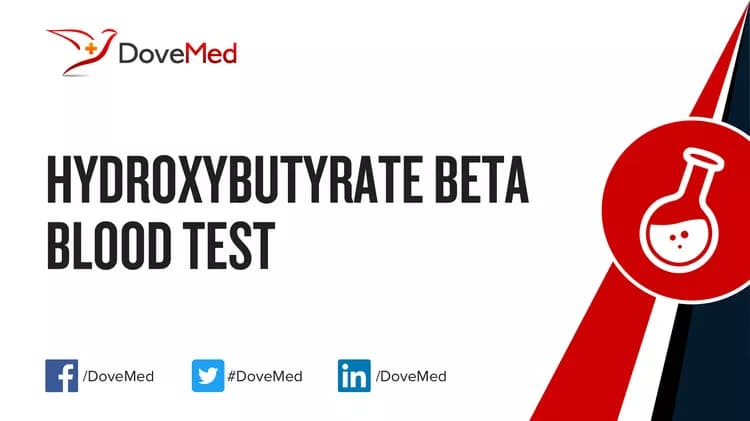What are other Names for this Test? (Equivalent Terms)
- 3-Hydroxybutyric Acid Blood Test
- BHB Blood Test
- Ketones Blood Test, Hydroxybutyrate Beta
What is Hydroxybutyrate Beta Blood Test? (Background Information)
- Hydroxybutyrate beta (BHB) is a type of chemical called a ketone, which is produced by the body in excessive amounts during ketosis. BHB accounts for the majority of ketones found in blood during ketosis, somewhere around 75%. Acetoacetic acid and acetone are other ketones that are commonly produced
- Ketosis occurs when the body uses ketones for energy instead of glucose or blood sugar. This may occur because of a lack of availability of blood sugar. It may also arise from metabolic disorders such as diabetes
- Because ketones are acidic, ketosis poses a danger of acidifying the blood. Normally, blood pH must remain within tight limits, between 7.35 and 7.45. Ketones thus pose a danger of ketoacidosis
- The Hydroxybutyrate Beta Blood Test helps determine the levels of BHB in blood. It is used to diagnose ketoacidosis and monitor therapy for diabetic ketoacidosis
What are the Clinical Indications for performing the Hydroxybutyrate Beta Blood Test?
Following are the clinical indications for performing the Hydroxybutyrate Beta Blood Test:
- Monitoring therapy for diabetic ketoacidosis
- Fever
- Fatigue
- Abdominal pain
- Dehydration
- Severe thirst
- Excessive urination
- Fruity-smelling breath
How is the Specimen Collected for Hydroxybutyrate Beta Blood Test?
Following is the specimen collection process for Hydroxybutyrate Beta Blood Test:
Sample required: Blood
Process of obtaining blood sample in adults:
- A band is wrapped around the arm, 3-4 inches above the collection site (superficial vein that lies within the elbow pit)
- The site is cleaned with 70% alcohol in an outward spiral, away from the zone of needle insertion
- The needle cap is removed and is held in line with the vein, pulling the skin tight
- With a small and quick thrust, the vein is penetrated using the needle
- The required amount of blood sample is collected by pulling the plunger of the syringe out slowly
- The wrap band is removed, gauze is placed on the collection site, and the needle is removed
- The blood is immediately transferred into the blood container, which has the appropriate preservative/clot activator/anti-coagulant
- The syringe and the needle are disposed into the appropriate “sharp container” for safe and hygienic disposal
Preparation required: No special preparation is needed prior to the test.
What is the Significance of the Hydroxybutyrate Beta Blood Test Result?
A high value (greater than 0.27 mmol/L) for the Hydroxybutyrate Beta Blood Test may indicate:
- Alcoholic ketoacidosis
- Diabetic ketoacidosis (DKA)
- Liver disease
- Infection
- Phenformin and salicylate toxicity
The laboratory test results are NOT to be interpreted as results of a "stand-alone" test. The test results have to be interpreted after correlating with suitable clinical findings and additional supplemental tests/information. Your healthcare providers will explain the meaning of your tests results, based on the overall clinical scenario.
Additional and Relevant Useful Information:
- Hydroxybutyrate beta is not detectable by many conventional ketones tests, including the nitroprusside test (Acetest)
Certain medications that you may be currently taking may influence the outcome of the test. Hence, it is important to inform your healthcare provider of the complete list of medications (including any herbal supplements) you are currently taking. This will help the healthcare provider interpret your test results more accurately and avoid unnecessary chances of a misdiagnosis.
The following DoveMed website link is a useful resource for additional information:
https://www.dovemed.com/common-procedures/procedures-laboratory/blood-ketones-test/
Please visit our Laboratory Procedures Center for more physician-approved health information:
http://www.dovemed.com/common-procedures/procedures-laboratory/
Related Articles
Test Your Knowledge
Asked by users
Related Centers
Related Specialties
Related Physicians
Related Procedures
Related Resources
Join DoveHubs
and connect with fellow professionals


0 Comments
Please log in to post a comment.